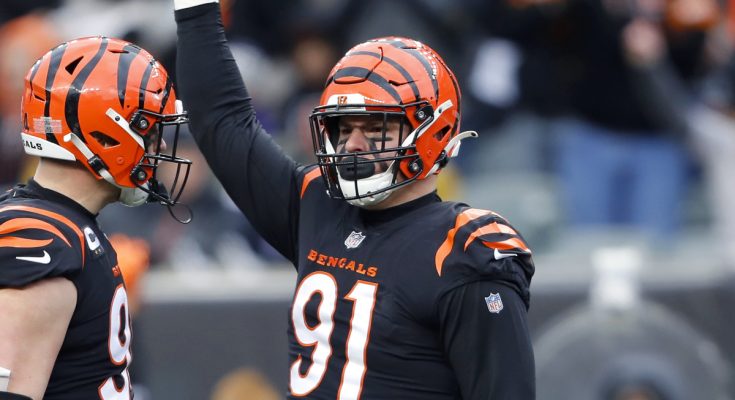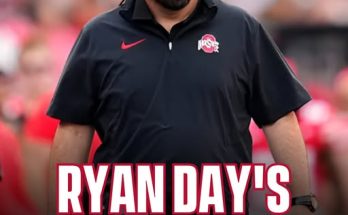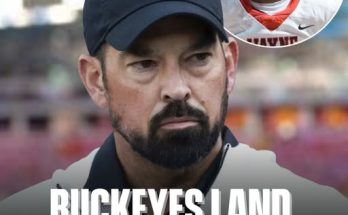Bryant McFadden’s recent comments about the Cincinnati Bengals and their contract negotiations with star defensive end Trey Hendrickson have stirred conversations across the NFL landscape. McFadden, a former cornerback who won two Super Bowls with the Pittsburgh Steelers and is now an analyst known for his candid takes, believes the Bengals will not be able to give Hendrickson the kind of contract he truly deserves. For a player of Hendrickson’s caliber, who has been nothing short of dominant since joining Cincinnati, the idea that the team may not commit to him financially raises important questions about how the franchise values its defensive leaders, the current state of the Bengals’ salary cap, and the broader dynamics of building a contender in a highly competitive AFC. The Bengals have long been criticized for their approach to player contracts, often viewed as conservative or hesitant to hand out blockbuster deals compared to some of the league’s big spenders. While that perception has shifted somewhat with the team’s recent run of success and their investments in players like Joe Burrow, Ja’Marr Chase, and others, the reality remains that Cincinnati has to be strategic with its money if it hopes to maintain a championship window. Trey Hendrickson, however, is not a player whose value can be overstated. In the modern NFL, elite pass rushers are among the most sought-after commodities, and Hendrickson has proven to be one of the league’s most consistent disruptors since arriving from the New Orleans Saints. Over the past few seasons, Hendrickson has racked up double-digit sacks, forced fumbles, and become the cornerstone of a defense that has helped the Bengals emerge as a powerhouse in the AFC. His relentless motor, ability to win one-on-one matchups, and knack for making big plays in crucial moments have elevated him into the conversation with some of the league’s top defensive ends. If the Bengals fail to retain him long-term, the impact on the defense could be devastating, as players of his skill set and production are not easily replaced.
McFadden’s perspective comes at a time when Hendrickson’s contract situation has already created headlines. Reports have surfaced that Hendrickson is unhappy with his current deal, feeling it does not reflect his market value given his performance and contributions. Entering the 2025 season, Hendrickson’s current contract is far from what some of the other top edge rushers in the league are earning, which has led to speculation about a potential holdout or even trade scenarios if an agreement cannot be reached. McFadden, who has been around the league long enough to understand how these negotiations play out, has emphasized that elite players often have to fight for what they are worth, particularly in a league where contracts are rarely fully guaranteed. For Hendrickson, the timing is especially tricky because the Bengals are also dealing with the financial ramifications of Burrow’s massive contract and the looming extensions for key stars like Chase and Tee Higgins. When you combine these factors with Cincinnati’s history of being financially cautious, McFadden’s skepticism begins to make sense.
There is also the broader NFL context to consider. The market for pass rushers has exploded in recent years, with players like Nick Bosa, T.J. Watt, and Myles Garrett resetting the standard for defensive contracts. Hendrickson’s production arguably puts him in that same tier, yet his current contract pays him far less than what those superstars are earning. From Hendrickson’s standpoint, it is not just about money—it is about respect and recognition for the role he has played in transforming the Bengals’ defense into one of the most formidable units in the league. McFadden’s comments underscore the risk that Cincinnati runs if they fail to address this situation decisively. A disgruntled Hendrickson could lead to distractions in the locker room or, worse, his eventual departure in free agency, which would force the Bengals to either overpay in the open market for a replacement or draft and develop a new edge rusher—a process that comes with no guarantees of success.
The Bengals’ front office, led by Duke Tobin, now finds itself at a crossroads. While the team has invested heavily in its offensive core, building around Burrow’s elite quarterback play, the defense has been just as critical to their recent playoff runs. Hendrickson, alongside players like Sam Hubbard and D.J. Reader, has been instrumental in pressuring opposing quarterbacks and creating turnovers in key moments. If the Bengals want to remain competitive in a conference that features elite quarterbacks like Patrick Mahomes, Josh Allen, and Lamar Jackson, they must maintain a strong pass rush. Losing Hendrickson—or allowing him to play out the final years of his contract unhappy—would be a gamble that could come back to haunt them when the margins are razor-thin in the playoffs.
McFadden’s opinion also sparks a larger discussion about how teams should balance paying their offensive stars versus their defensive anchors. In today’s NFL, where explosive offenses often steal the headlines, it can be tempting for teams to allocate the majority of their salary cap to quarterbacks, wide receivers, and offensive linemen. However, as recent Super Bowls have shown, a dominant defense can be the difference between winning and losing on the biggest stage. Hendrickson’s ability to generate pressure without constant blitzing gives the Bengals’ secondary more flexibility and has been a major factor in their success against high-powered offenses. It would be a mistake to undervalue such an asset simply because the team is juggling multiple contracts.
Another angle to consider is Hendrickson’s own leverage in this situation. At 30 years old, he is still in his prime but approaching the age where teams often become hesitant to hand out long-term deals. However, his production and durability suggest that he has several elite seasons left. If the Bengals drag their feet in negotiations, there are plenty of other teams that would gladly pay top dollar for his services. In fact, if Hendrickson were to hit the open market, he would likely become one of the most sought-after free agents, with teams like the Bears, Raiders, or Falcons—franchises desperate for pass rush help—lining up to make offers. McFadden’s skepticism may reflect a belief that the Bengals are unwilling to engage in that kind of bidding war, preferring instead to stick to their valuation of the player, even if it means risking his departure.
The coming weeks and months will reveal just how serious Cincinnati is about keeping Hendrickson happy. Training camp and preseason will be pivotal moments, as any signs of a holdout or public dissatisfaction could pressure the front office to act. It is worth noting that Burrow, as the face of the franchise, may also play a role in these dynamics. Star quarterbacks often lobby for the retention of key teammates who make their jobs easier, and Burrow knows better than anyone how valuable a strong defense is in helping him close out games. If Hendrickson were to be traded or allowed to walk in free agency, it could send a message to the locker room that might not sit well with the players who have worked so hard to change the culture in Cincinnati.
Ultimately, McFadden’s comments are a reminder of the harsh realities of NFL business. Players like Hendrickson pour their heart and soul into the game, often risking their health and longevity, only to find themselves negotiating with teams that are trying to maximize every dollar. While this is the nature of the league’s salary-cap structure, it does not make the process any less contentious. For Hendrickson, this may be the last major contract of his career, and he has every right to fight for the security and respect that his performance warrants. For the Bengals, the challenge is finding a way to reward him without jeopardizing the financial flexibility needed to keep their core intact for years to come.
As of now, there are no clear signs that a deal is imminent, which only fuels speculation about what might happen next. Will the Bengals step up and offer Hendrickson a contract that puts him among the league’s highest-paid defensive players? Or will they stick to their guns and risk alienating one of their biggest defensive stars? McFadden’s skepticism is not unfounded, but it is also not a death sentence for the Bengals’ chances of retaining Hendrickson. With the season fast approaching, the team has an opportunity to prove that it values both sides of the ball equally and that it understands the importance of keeping a player who has been vital to their recent success. The next few months will be a defining period not just for Hendrickson’s career, but for the Bengals’ ability to maintain the championship-caliber roster they have built.



